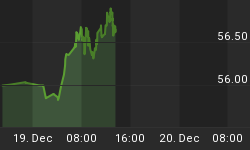Gold Up vs. Major Currencies as US Fed "Enhances Inflation Hedge"
THE PRICE OF GOLD rose sharply as the US Dollar fell Thursday morning in London, touching four-session highs above $960 an ounce as world stock markets rose for the third day running.
The Dollar fell further to one-week lows against the Euro after France and Germany said their economies grew between April and July, capping 9 months of recession.
Last night the Federal Reserve confirmed that it will continue creating dollars to buy US government debt and higher-risk mortgage-backed securities.
"Market sentiment changed overnight after the Federal Reserve's statement," said one Hong Kong dealer today, noting the correlated move higher in Euros, gold, oil and equities.
"Gold Prices were bolstered by the US Federal Reserve," agrees Investec Bank in Australia.
"[The Fed] signaled its strong resolve to keep interest rates at near zero, thereby enhancing bullion's status as a hedge against inflation."
Selling at the $950 level was said to be "well absorbed" during Asian wholesale trade today. Indian Gold Prices dipped as the Rupee bounced vs. the Dollar. Japanese Gold Futures traded in Tokyo ended the day 1.5% higher at ¥2,955 per gram.
Adding 1.9% from yesterday's two-week Dollar low, the Gold Price also rose for UK and European investors, breaking new August highs vs. the Pound at £577.
The Gold Price in Euros rose 1.0% from Wednesday's dip to breach €673 an ounce.
"In the current environment, it is just too obvious that gold has an important function in the monetary system," says Axel Merk, manager of the California-based $415 million Merk Hard & Asian Currency Funds in California.
Given near-zero interest rates and ongoing quantitative easing worldwide, "We just don't know what would happen to currencies."
Also pointing to last week's renewal of the Central Bank Gold Agreement - under which 19 European authorities will cap and pre-announce any sales from their gold reserves until 2014 - "The attitudes of the central banks right now are a very solid reaffirmation of the value that gold can bring to a properly balanced portfolio of reserves," says George Milling-Stanley at industry-marketing group the World Gold Council.
"Sales under CBGA 3 will likely undershoot the 400 tonnes. It is just a ceiling, not a target."
To reach 400 tonnes a year, "certainly on a consistent basis, you would need sales from either Germany or Italy," says Stephen Briggs, analyst at RBS Global Banking, "and there are no signs of that at the moment."
Today the Swiss National Bank said it's sold 105 tonnes of gold to the private sector over the last 12 months, completing its planned sale of 250 tonnes under the previous CBGA, which expires on Sept. 26th.
"The proceeds," says the SNB, "amounting to CHF 3 billion [$2.8bn] were invested in securities."
On the data front, meantime, consumer-price expectations put the rate of Australian inflation at 3.5% over the coming year, the Melbourne Institute said today, the highest level in 10 months.
Friday brings Consumer Price data for July from both the Eurozone and United States.
Reviewing the Eurozone's 0.1% economic shrinkage in the second quarter of 2009, "The latest data con?rm the ongoing deceleration in broad money and credit growth," says the European Central Bank in a new report.
"These developments support the assessment of a slower underlying pace of monetary expansion and low in?ationary pressures over the medium term," the ECB reckons.
Early Thursday, European oil prices jumped 2.2% to $74.50 per barrel after the International Energy Agency raised its global demand forecast.
Long-term interest rates rose as government bond prices fell in the open market, pushing 10-year German Bund yields up to 3.50%.















